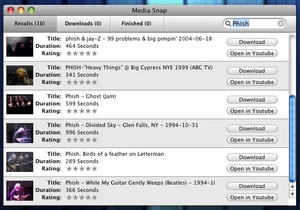I have a 72-hour grab-and-go kit. I actually have a couple of them. They’re nothing terribly fancy. Usually a backpack with lots of stuff you would need if you have to evacuate the area where you live. I bought one of them and paid around $200 for it. After inspecting the contents I put together a second one with items I either purchased myself or gathered up from around the house. The one I put together was very different from the one I purchased, cost half as much and I think it’s better.
Don’t get me wrong. The idea of a 72-hour kit is a good one. Especially if you live in an area prone to potential natural disasters such as coastal areas, floodplains, or areas known for tornadoes or brush-fires. Even if you live in a relatively safe area, stuff happens. Unfortunately, many of us take our time getting around to preparing especially if we have never endured an evacuation or major, natural disaster.
I will confess I have been guilty of complacency in the past. The lights would go out due to a storm and I would fumble around in the dark looking for a flashlight that would work; batteries, a candle or two and the matches to light them. I would usually find everything just about the time the lights came back on. This would lead me to great resolve to take action and buy new flashlights the next day, and to determine a place where the candles and matches would always be stored. The next day I would promptly forget about it.
What’s ironic is that I am very experienced in wilderness and outdoor survival. I have survival kits I have designed, have taught wilderness survival, and endured it from time to time. For some reason I’ve been a bit complacent about it at home.
That’s what led me to buy the 72-hour kit. It’s for a family of four and many companies sell them.
That all sounds good, but I’ve found myself pondering a few questions. For one, what’s the story with all the tube tents? If I do have to evacuate, local municipalities usually do a pretty good job of sheltering people in the event of a disaster. Tube tents might be nice to have but other items beg the same question.
A compass sounds right, but even if my town was significantly affected by an event I’d still know my way around.
Space blankets? That’s actually a pretty good idea. If I’m in a local shelter and the power’s out in the winter, they could come in handy. Then again, I’ve got lots of blankets at home that are way better than a foil space blanket. I might bring some of those along instead. By the way, I spent a night in the woods wrapped in a space blanket once. Big mistake. When I woke up in the morning my clothes were soaking wet from the perspiration trapped in the foil. Cut some vents into the thing so there’s some transpiration.
In fact, the more I thought about my wilderness survival training and research, the more I noticed that many items in commercial 72-hour kits seem to assume you’re going to spend 3 days and 3 nights in the wild. That’s possible but it’s more likely you’ll find yourself in a friend’s home with the lights out, or in the high school gymnasium wondering what to do with a magnesium fire starter. I think it’s fair to say that many people who endure a widespread catastrophe feel like it’s the end of the world. But so far it hasn’t happened and it makes my wonder why so many commercial kits seem to be filled with items designed for an apocalyptic event. Items that seem superfluous if not curious.
What became glaringly apparent as I tried to imagine various scenarios that my family and I might encounter were the many items that were missing.
Here’s a good example. In one of the commercially available 72-hour kits I saw on the Internet, they include a signal mirror. I wonder. If I’m spending a few days sleeping on a cot at the local church, who exactly am I supposed to signal with this thing? Maybe a cell-phone, and if the lights are out everywhere -a solar cell-phone re-charger would make more sense?
I would suggest you look at the recommended items for a 72-hour kit on the FEMA website. Review them and consider both what you would want, and what you think would be necessary for your location. They also have suggestions for things you should have at home, and yes that includes flashlights, batteries, candles and matches. I think the FEMA recommendations are more rational although I still would recommend some additions.
Toilet paper is always included in commercial kits, and I would agree. However, I can think of a couple of people who might wonder why there were no tampons.
Water is usually included in those little, foil bags in commercially available kits, but they’re only 4 ounces each and not easy to refill. The average adult needs a gallon of water a day. Maybe it would be better to have some large, plastic bottles that you fill yourself, and a portable water-filter if water is scarce. Most sporting goods stores sell them in their camping section.
All of the commercial kits include food, usually in the form of energy bars. I’ve eaten them both as a test and in one survival situation. They’re horrible and you’ll probably spend a week on laxatives if you have more than a few. You’re better off packing some food you like from your pantry than eating some fortified, sawdust-bar that’s been sitting in a little backpack for years.
None of these kits come with money. Put some in there. A hundred bucks if you can spare it. If the lights go out the banks won’t be open, and most places won’t be able to take credit cards. That’s a lousy time to figure out you only have four bucks in your wallet or purse.
Include a list of phone numbers. If your cell-phone is dead and you can’t recharge you can always borrow one or use a land-line if available. The only question is whether or not you can remember all of the phone numbers that you have pre-programmed into your dead cell-phone.
Stocking caps are a good idea. I’ve seen them for a buck apiece at some stores. If you’re sleeping in a drafty gymnasium you’ll be grateful for something as simple as a stocking cap. Take it from a guy who has spent too many nights sleeping in a tent on a chilly night without a hat.
Many of the obvious items, and not so obvious, are on the FEMA lists. Most of them are not included in commercially available kits so either add them to your commercial kit, or assemble your own. Either way, you’ll have some peace of mind if you know you’ve taken some precautions while you hope you never get that knock on the door encouraging you to evacuate as soon as possible.






